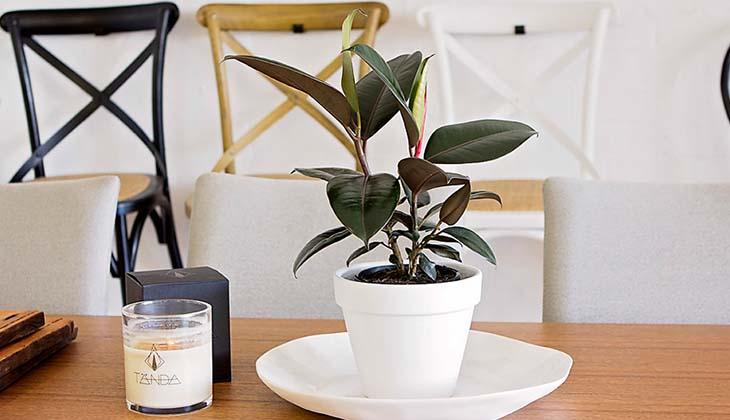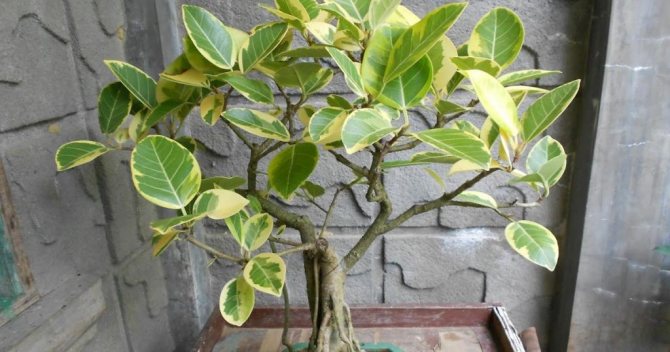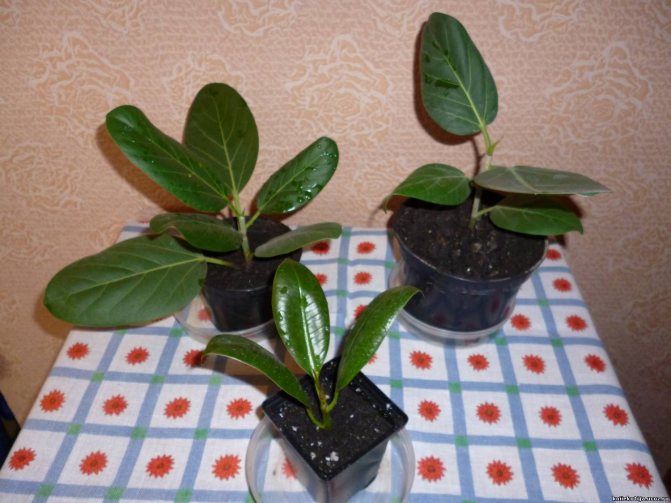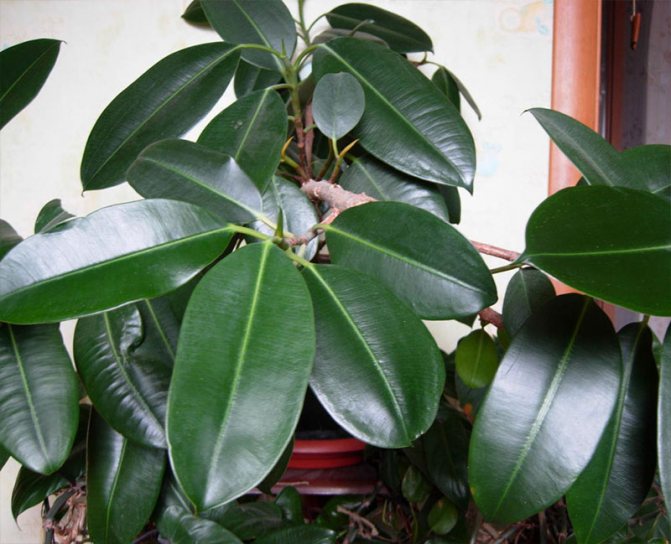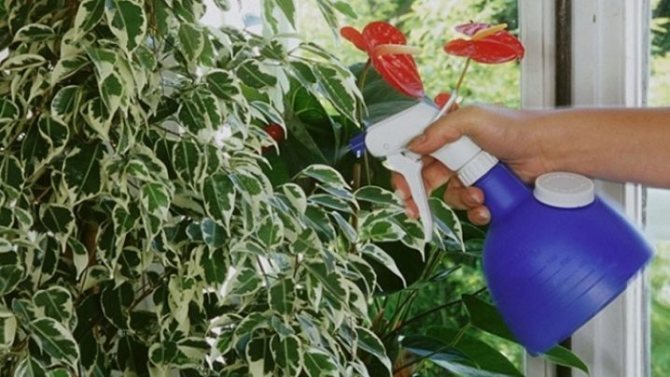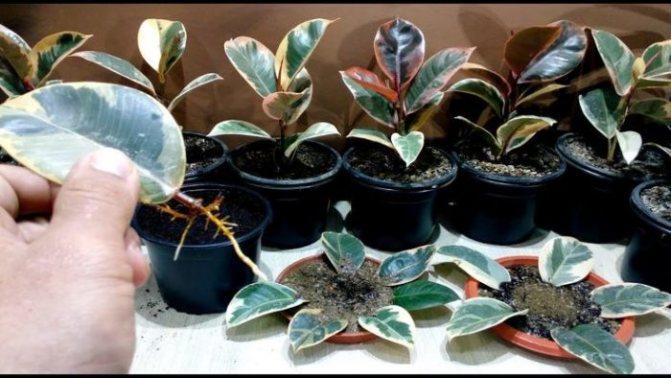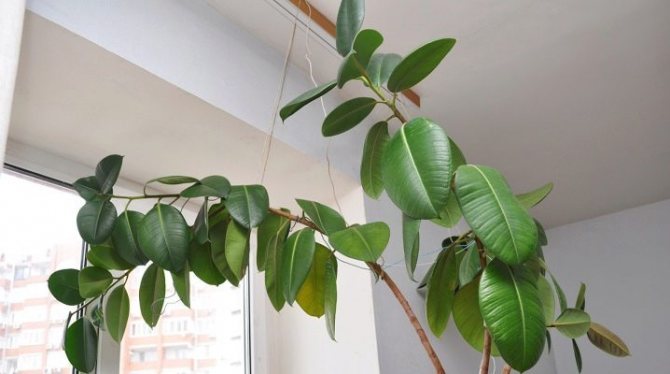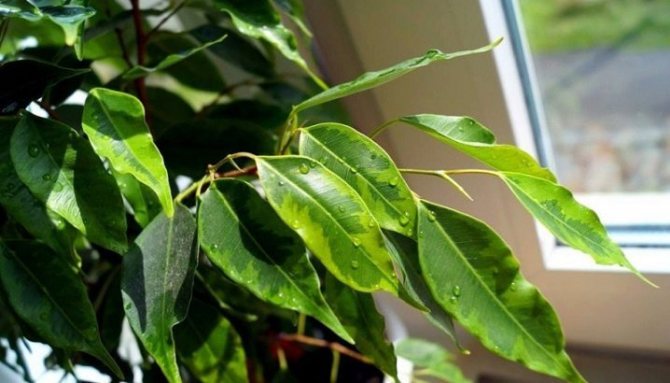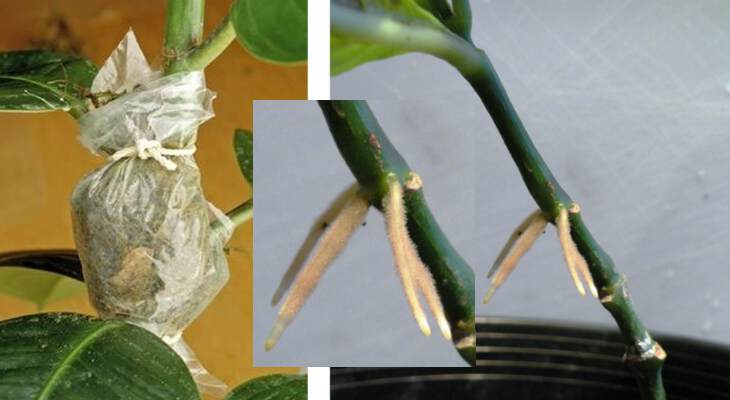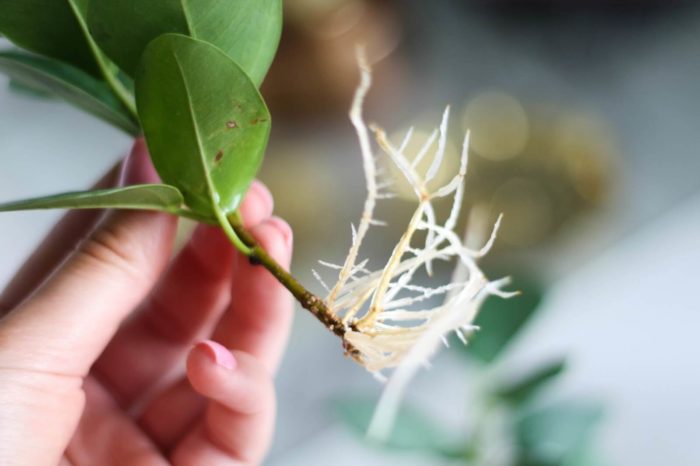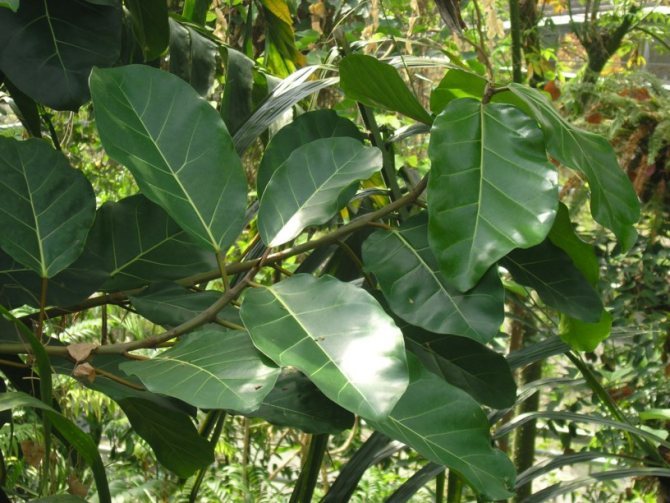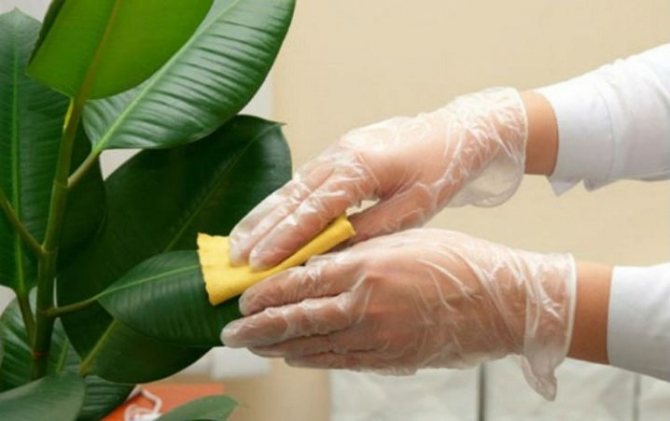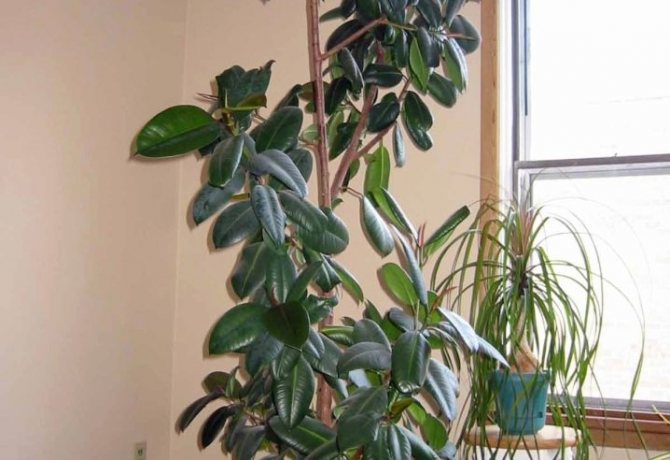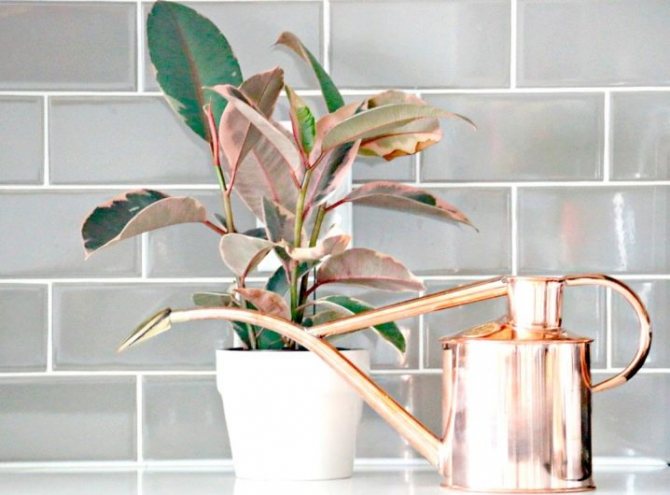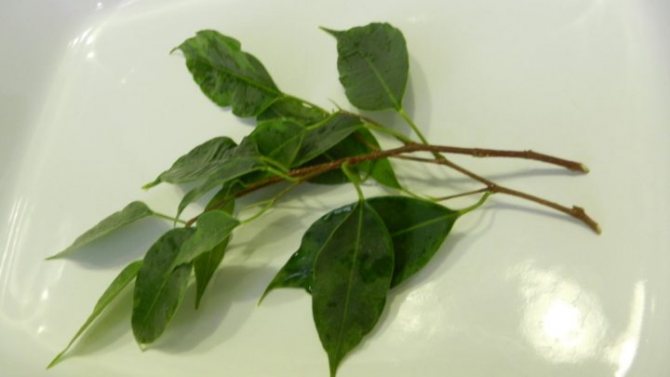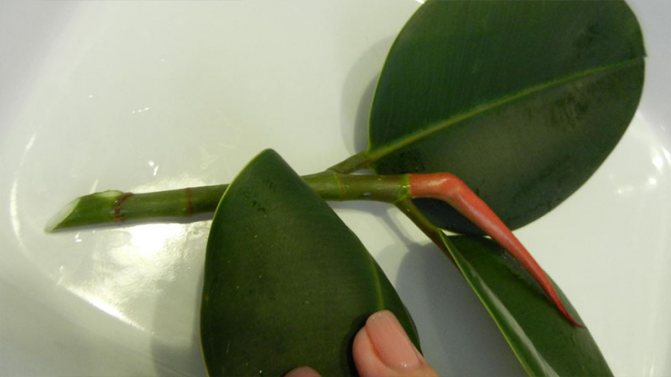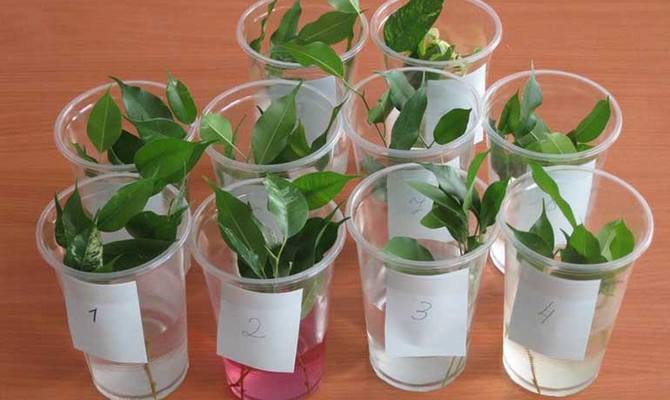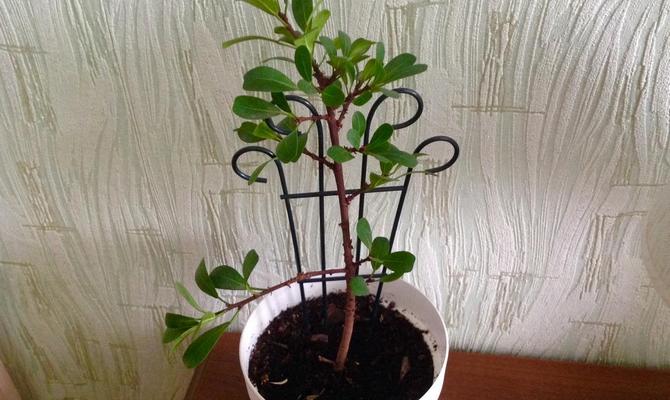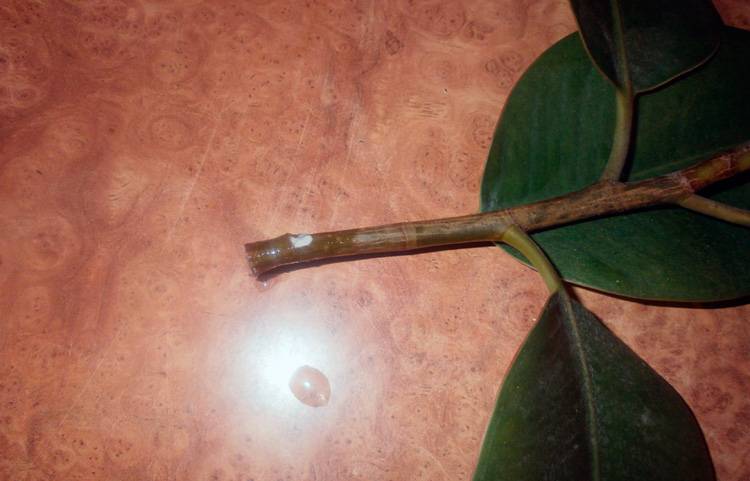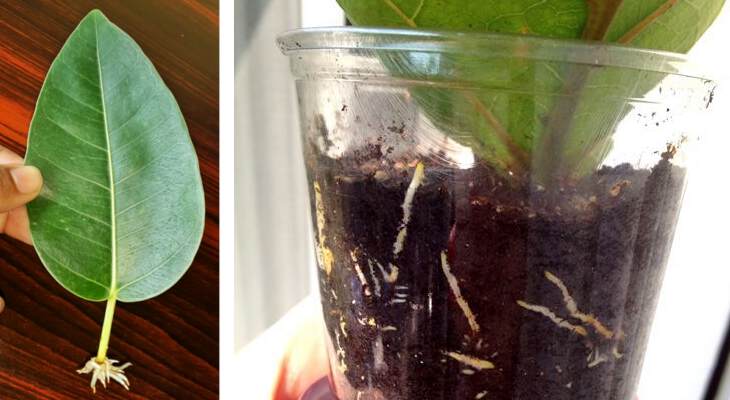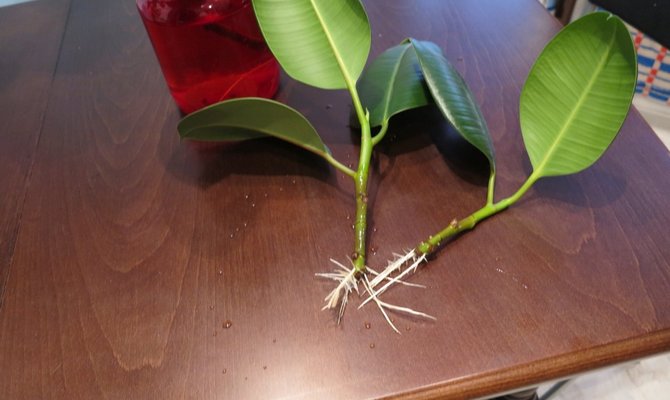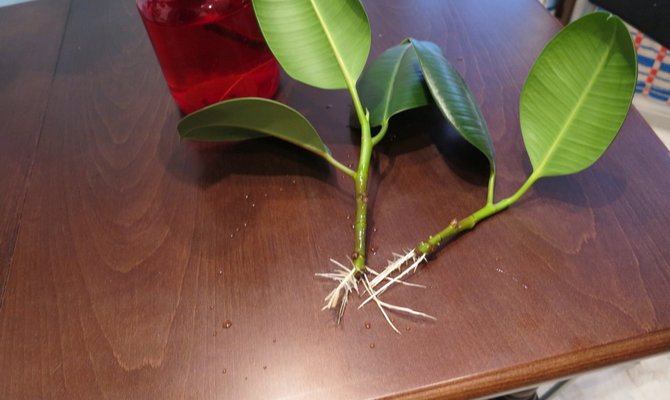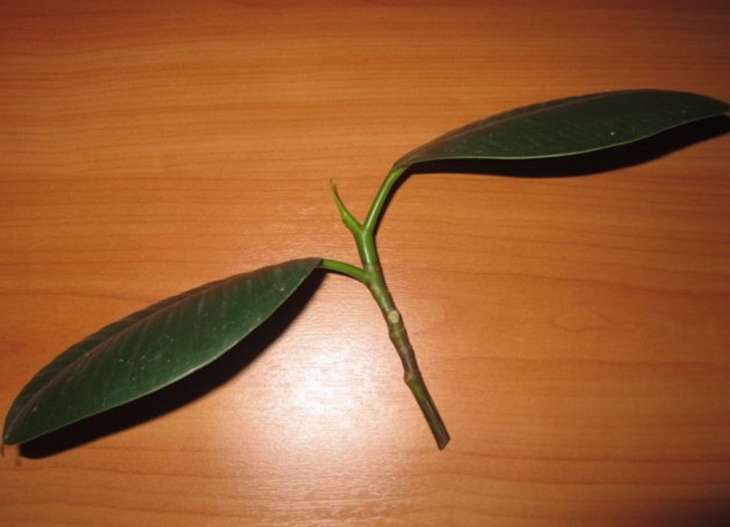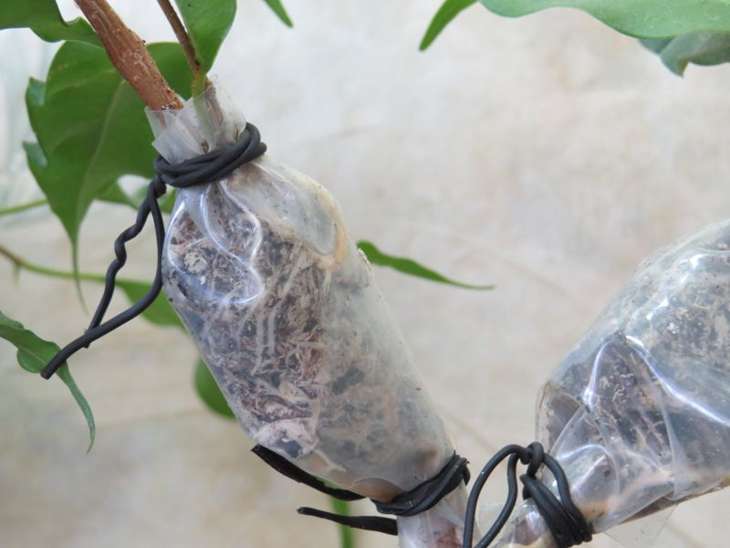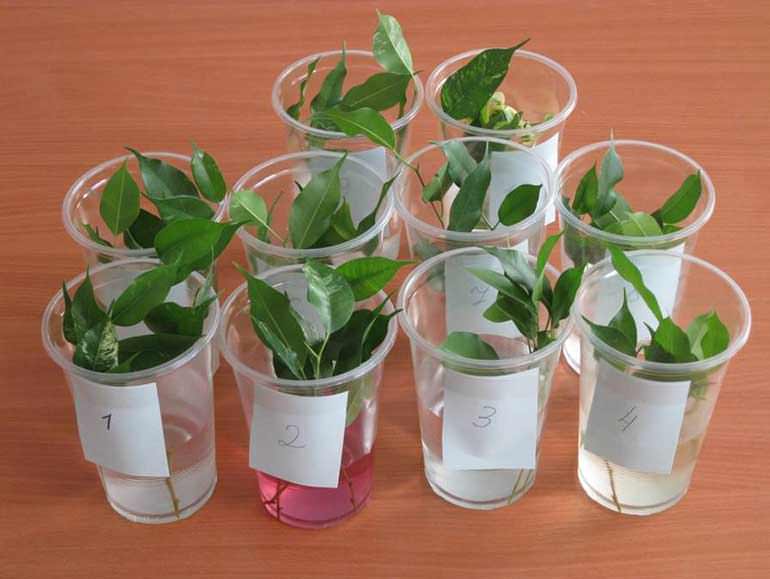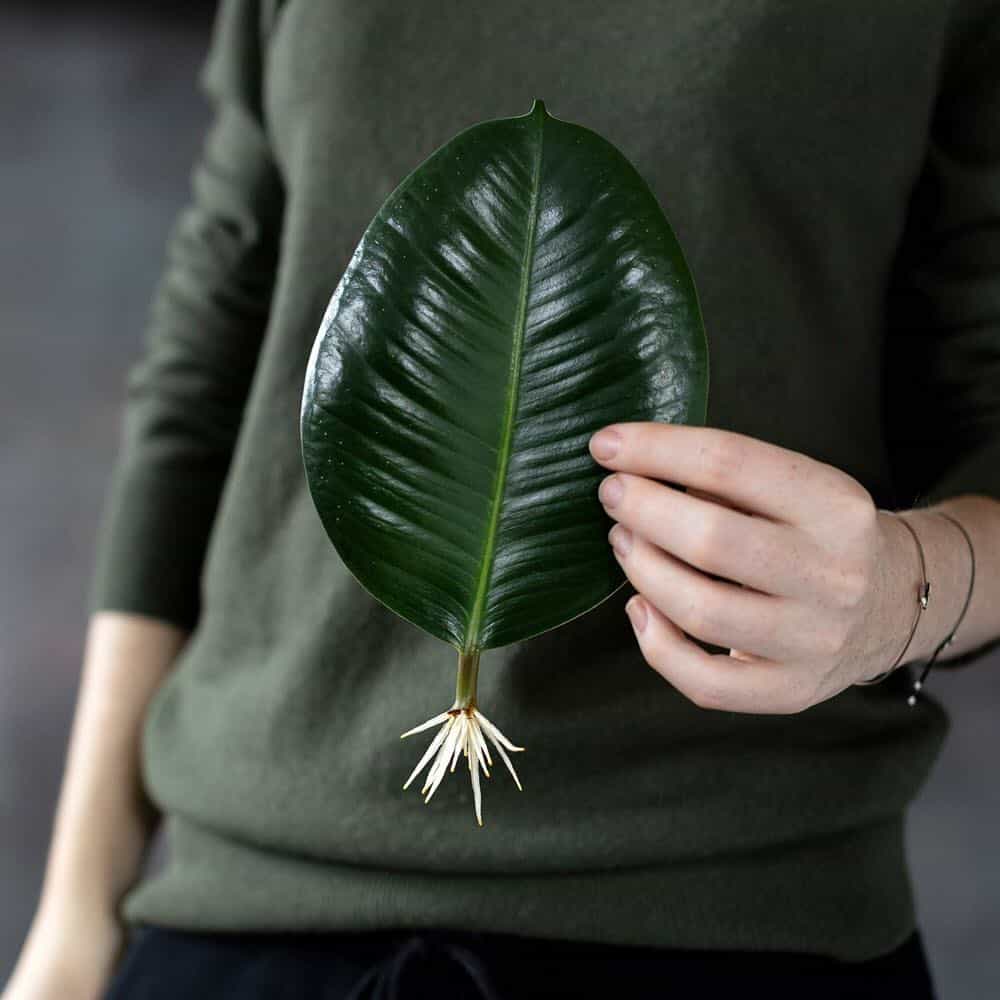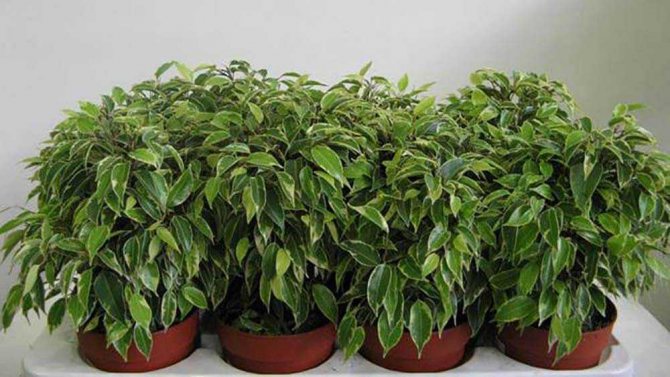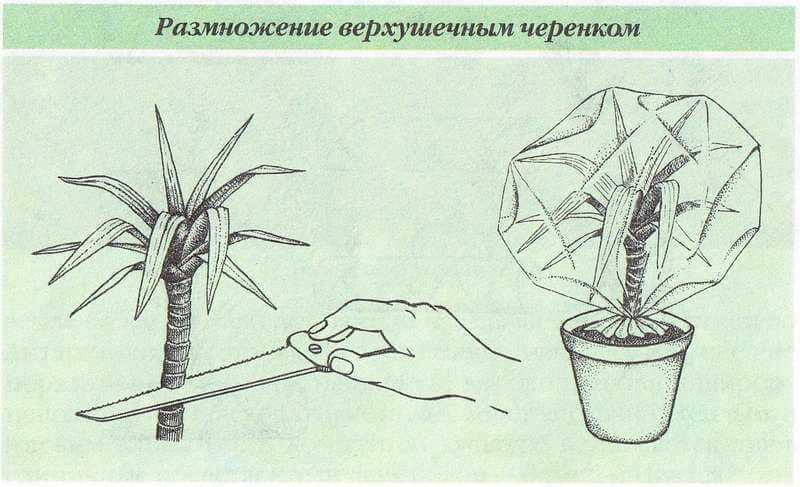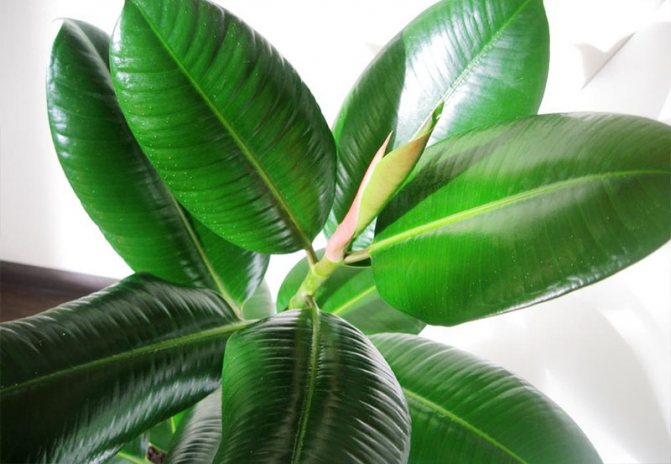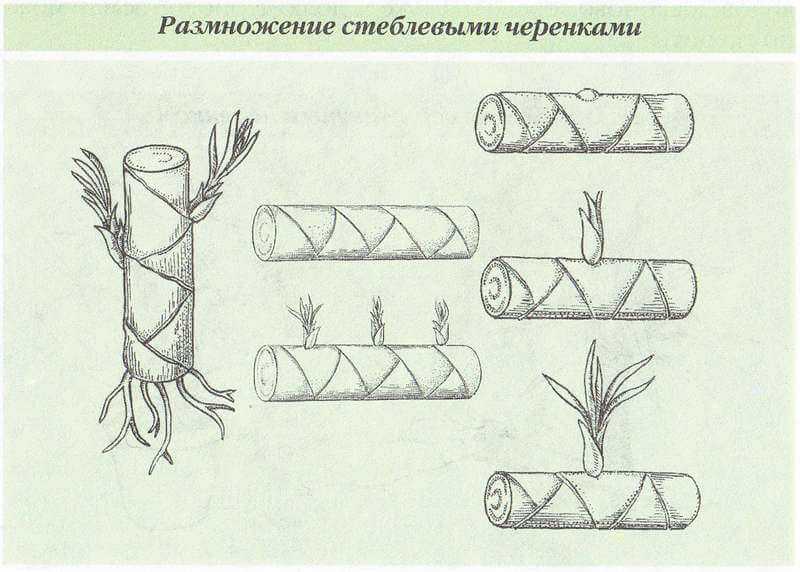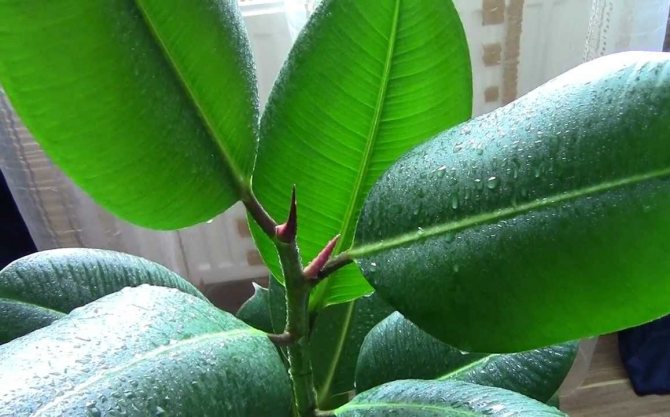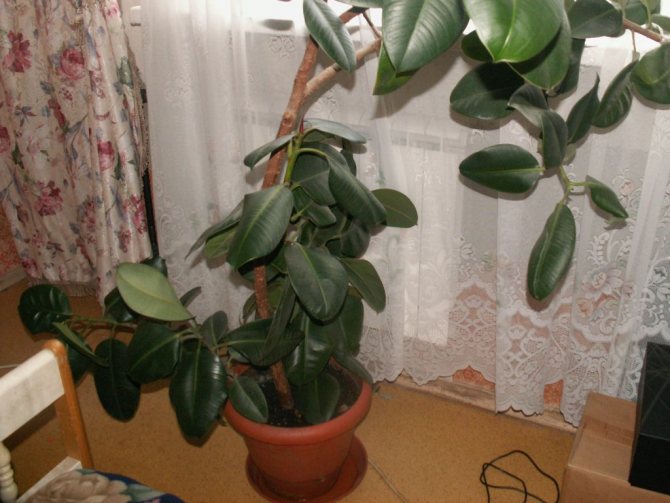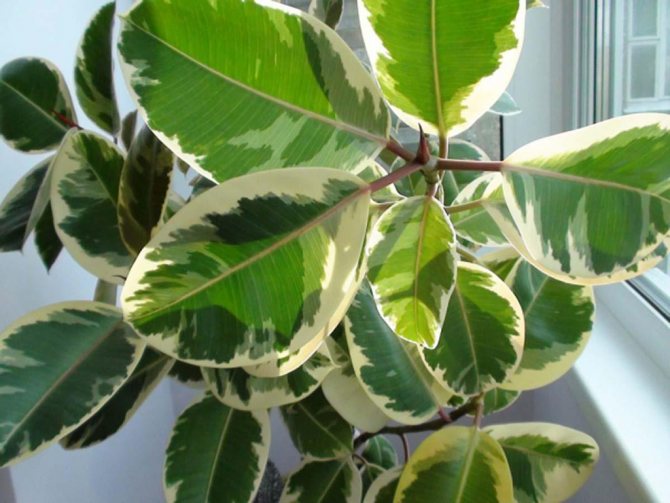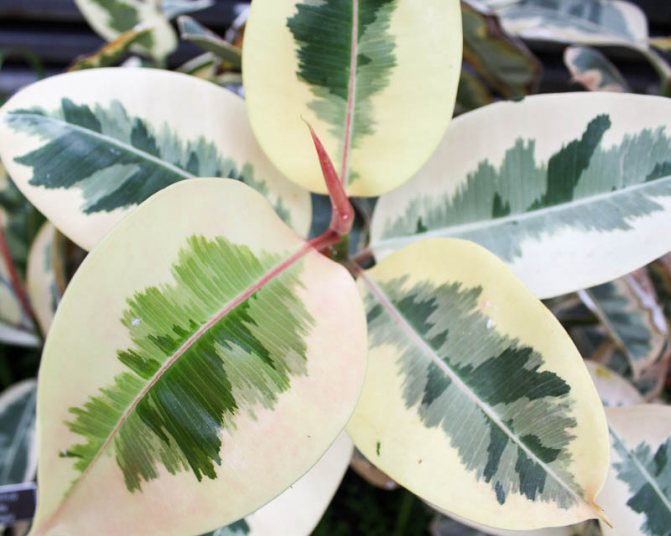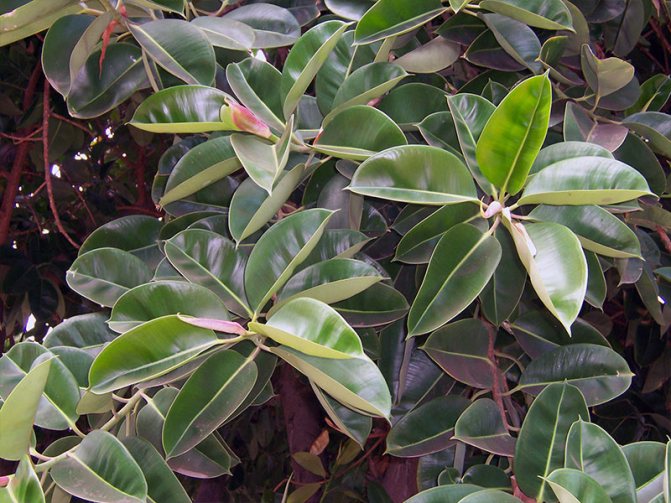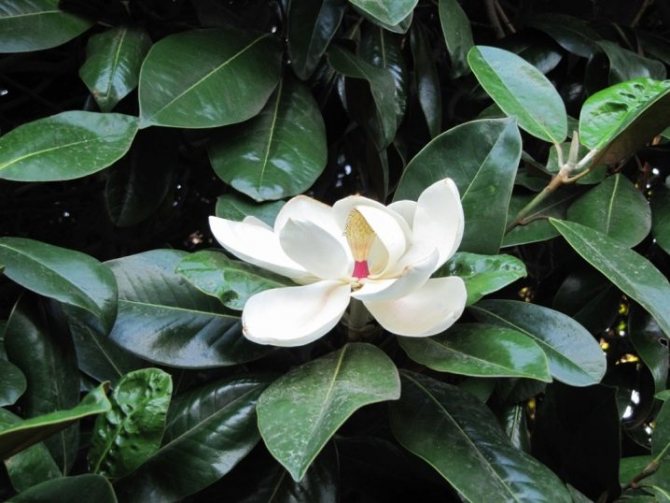»Flowers» Ficus propagation methods at home - rules and recommendations
0
9
Article rating
There are several ways to propagate ficus at home. The most effective are cuttings, cuttings, leaves and seeds. Each method has advantages and disadvantages, as well as a different growing technology. Let's consider how to prepare the plant for the procedure and what to do after.
Ficus breeding methods at home - rules and recommendations
Several important nuances
Have you decided to breed ficus at home? Then you most likely know that most plants reproduce in three ways: by cuttings, layering, and using seeds. It should be noted right away that it makes sense to carry out the latter method only if you are a professional breeder. But all other techniques will show just excellent results. Just before breeding, you should take into account a number of certain nuances.
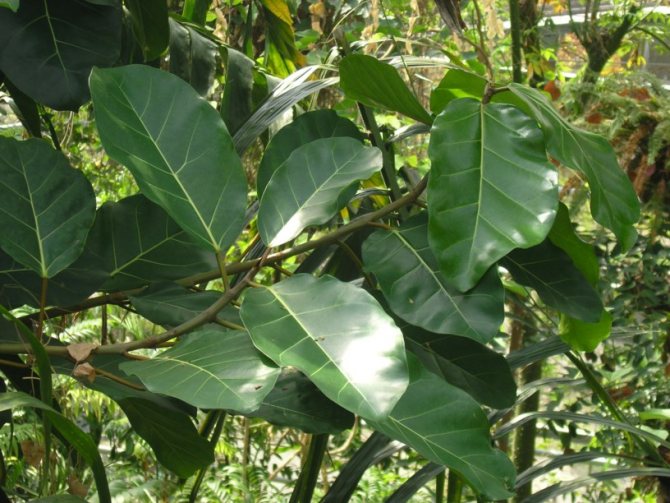
- Season. It is highly recommended to carry out the breeding procedure exclusively during the warm season. May and August are considered ideal months. However, if you decide to propagate the ficus in June or July, then your idea will most likely also be crowned with success. But in winter or late autumn, it is better not to disturb the plant. Even if you manage to propagate the ficus, the process will often hurt and generally look weak.
- Sun protection. Young shoots have an extremely negative attitude to direct sunlight, so grafting will have to be done in the northern room, where the risk of burning the leaves will be minimal. If this option is not possible, then be sure to use shading. This can be done with a dense fabric or special garden mesh, the percentage of shading of which is 60%.
- Cleanliness and sterility. As soon as your shoots give their first roots, you will have to transplant them into separate pots, having pretreated the cuttings with a rooting stimulant. However, all instruments used must be clean and sterile. The same applies to the process of harvesting planting material. Be sure to treat scissors or pruning shears with alcohol or potassium permanganate.
- Watering. During the first days after transplanting a young cutting into a separate container, you will have to use only warm and settled water. It is best to give preference to the life-giving liquid that is collected after the rain. Well, or alternatively, charcoal-filtered water is suitable. However, in any case, it must first acquire a soft texture by standing for 2-3 days before it can be used for watering.
And these are just the main nuances that relate to the propagation of ficus by leaf or cuttings. Also, experienced gardeners give quite a lot of useful advice on how best to carry out a particular procedure. You will find more information on this in the following sections. In addition, they will also present a detailed algorithm of actions that must be followed in order for reproduction to be successful.
Care after breeding
The successful reproduction of an indoor flower depends on how properly and on time it will be properly cared for. After planting, young plants need to provide several conditions.
Humidity
The optimal indicator is 70-75%, so the plant is regularly irrigated with warm water. If the flower is in a room with dry air, spray it every day, in a room with moderate humidity - after three days. Use warm and settled water.
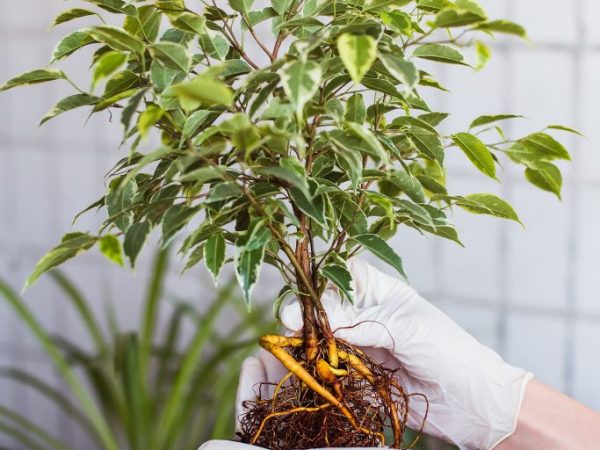

Ficus must be sprayed regularly
Additionally, once a month, you can arrange warm showers, having previously covered the soil in the flowerpot with polyethylene.
Illumination
For the rapid growth of the root system and green mass, the ficus needs diffused daylight for at least 10 hours a day. The best place to contain will be the windowsill on the east side. When grown on a southern window, shade at lunchtime, otherwise the foliage will quickly burn and dry out. If your flower is located in the northern part of the house, artificial lighting will be required.
Watering
It should be moderate and only after the soil has dried to a depth of 4-5 cm. To avoid root rotting, it is worth taking settled or filtered water at 40 ° C.
After moistening, the soil is loosened to maintain its moisture and breathability.
Top dressing
In the first two months after planting, the flower is not fed, it has enough nutrients that are contained in the substrate. Then fertilize once every two weeks. Use ready-made preparations for growing ficuses with mineral and organic components. Closer to autumn, fertilizer is not applied, since the plant enters a dormant phase.
Temperature
The mode depends on the season:
- during the growing season, from spring to autumn - 23-25 ° С;
- in the cold season - 16-17 ° С.
He loves fresh air, but does not tolerate drafts and sudden changes in temperature, therefore, at the time of airing the room, the flower is taken out to another place.
Ficus cuttings (without leaf)
How to propagate ficus at home? The instructions below will tell you step by step about this. However, it should be noted right away that the most important thing is to properly prepare the cutting. To do this, you must use a sharp knife, pre-treated in an alcohol solution. If you neglect this important rule, then even full compliance with the algorithm described below does not guarantee a good result.


- Preparing the soil. To do this, you can purchase ready-made land in the supermarket or try to cook it yourself, mixing turf and leafy soil of the same structure in equal proportions.
- Preparing the pots. Do not use too large containers, as this will not lead to anything good. It is best to give preference to pots with a diameter of 9 to 12 centimeters.
- We pour a drainage layer on the bottom of the container. This is necessary so that the roots of the plant are not deficient in oxygen. Broken brick or small pebbles can be used as drainage.
- Preparing the stalk for planting. To do this, you will need to remove all the leaves from it, so that the flower does not waste energy on their development, and also treat the lower part with a root formation stimulator.
- We plant a cutting. First, we make a small depression in the substrate, after which we place the cutting in it. To create a greenhouse effect, it is recommended to cover the top of the pot with a bag or the stalk itself with a jar.
As a planting material, it is strongly recommended to choose middle-aged branches that are already lignified. Otherwise, rooting may not take place, since the roots will grow very small and quickly rot. Although, while observing the optimal irrigation regime, it will be easier than ever to avoid such a situation.In the next section, you will find rules for caring for a young plant grown from a cuttings.
Description of the plant and growing conditions
Rubber ficus is one of the most common types in indoor floriculture. According to popular beliefs, he brings family well-being to the house. This plant is native to India and southern Indonesia. In natural conditions, elastica is a large evergreen tree about 30 m high.
Ficus is characterized by large leathery elliptical leaves of rich green color. Young leaves may have a slight reddish tint. In indoor conditions, elastica practically does not bloom.
The milky sap of this plant is quite irritating and, under certain conditions, can lead to severe allergic reactions or dermatitis. Once this species was grown on an industrial scale for the purpose of obtaining rubber.
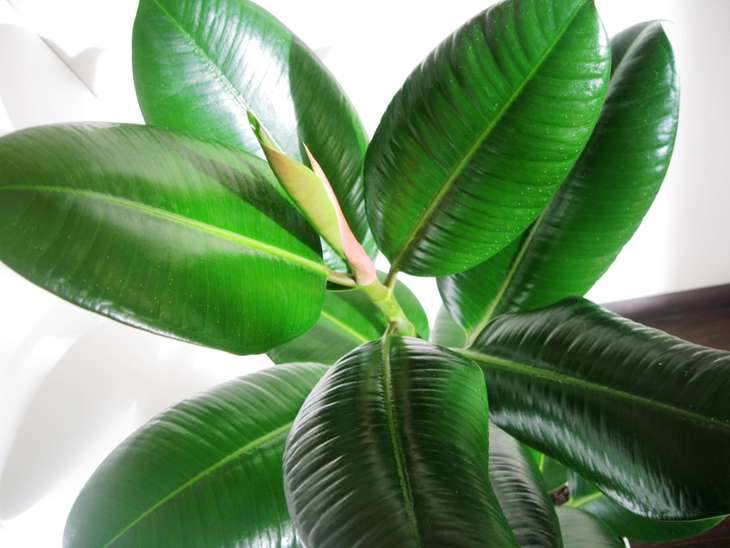

When placing elastica in a room, preference should be given to well-lit places, but without the presence of direct sunlight. With a little shading, it continues to develop, but its growth rate is significantly reduced.
With a prolonged lack of lighting, the trunk of the plant is strongly stretched, and the shoots are bare. To avoid this, in winter, the temperature is reduced to 15-16 ° C and the amount of watering is reduced to a minimum.
Due to the popularity of this plant, its large specimens are quite expensive. But do not be upset if there is no financial opportunity to purchase it. You can also grow a beautiful large plant with your own hands, especially if you know how to propagate a rubber-bearing ficus in indoor conditions.
The soil for growing elastica should be fertile and loose. It is best for him to purchase a ready-made substrate for growing ficuses. You can also make it yourself by mixing universal peat soil with turf soil, humus and sand in equal proportions.
Cutting care in the first weeks
Now you know how to propagate large-leaved ficus by cuttings without leaves. However, it should be understood that the process of rooting the cuttings in the soil is quite lengthy, even if you have previously treated the lower surface with a root formation stimulant. As a rule, the first roots will begin to appear in a week, however, with particular confidence, it is possible to assert that the plant has taken root only after 4 weeks.
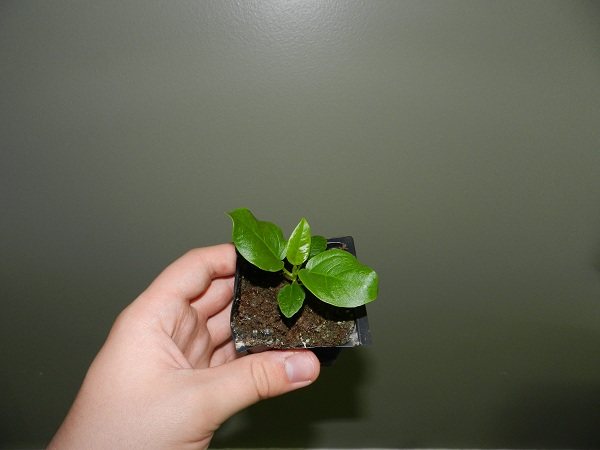

The main task of the grower during this period is to maintain optimal conditions for growth. In 90% of cases, plant death at this stage occurs due to excessive waterlogging. However, a lack of moisture will also negatively affect the health of the sprout. Therefore, most professionals recommend watering the ficus in small portions as soon as the upper part of the substrate begins to dry out.
As for fertilization, they should not be applied during the first 3 months without special need. However, if you see a noticeable lag in growth of some cuttings, then you can use organic additives designed for ficuses. You should be especially wary of nitrogenous fertilizers. This trace element is often lacking in an exotic flower, but an excess leads to the death of the root system.
How to properly plant a ficus shoot
May 1st, 2014 Know everything!
The ideal time to plant ficus is spring. In order for the plant to take root, adapt to the microclimate of the room, strengthen and prepare for further growth, warm and sunny weather is needed. And this, of course, is summer.
Well, in the fall, the ficus will be ready for the most unfavorable season - "wintering". For planting, it is best to use the top of the plant (about 10 cm). Immerse the shoot, cut at an acute angle, in warm water for 1-2 hours, so that the juice released during cutting is gone.
Then the cutting needs to be dried. In order for the shoot to give roots, it is necessary to place it in water (adding activated carbon will not be superfluous).
You need to choose a place for the sprout warm and humid. As soon as the roots appear, we plant the sprout in a light loose substrate (the composition must include sand). You need to choose a small pot so that the root system develops gradually.
Using a glass jar or a plastic bag, we create a greenhouse for the scion. Then we stock up on patience and watch the cuttings: the ficus takes root for about a month. All this time, you need to carefully consider watering the plant, since the ficus prefers moist soil, and also do not forget to "ventilate" the seedling from time to time.
The most interesting news:
Reproduction using a leaf
Not sure how to propagate a large-leaved ficus with a leaf? Then the information from this section will come in handy. It is worth noting that the propagation of ficus with a leaf is the most preferable procedure for a novice grower, since it does not require a lot of time and effort. In addition, the percentage of rooting in this case is much higher than in the previous one, and it will not be difficult to prepare the planting material.
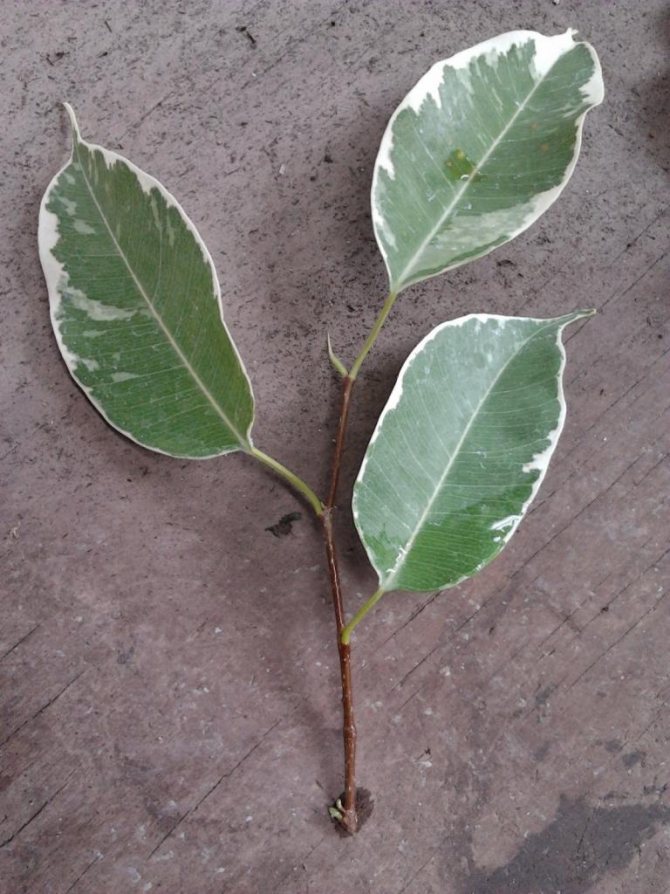

To begin with, we prepare a stalk with a large leaf. As in the previous case, one should give preference to such planting material, which is already quite woody. The stalk is cut off at an angle of 45 ° with a sharp knife at a distance of 5 centimeters from the base of the leaf. After that, it is necessary to treat the cut with a rooting stimulator and immerse the cutting in water. For ease of care, you can wind the sheet into a tube and tie it with a thread.
Do not be afraid to shorten the leaf by cutting off most of it if it turns out to be very large. Such actions will help to significantly reduce the rooting time, since the plant will not spend too much energy on maintaining the vital functions of unnecessary parts. As soon as the first roots appear on the shoot (2-3 weeks), the cutting is placed in a substrate with pre-prepared soil. You can use a plastic bag to create a greenhouse effect.
Scion preparation
To cut the scion, you need a sharp garden knife and activated charcoal powder. The procedure is not carried out with scissors and blunt instruments. This greatly disturbs the structure of the cambium and, as a result, the nutrition of the plant.
The ficus process should be 12-17 cm long with 2-3 leaf internodes. The cut is made 0.5 cm below the internode at a slope of 45 ° C relative to the stem. After that, the wounds of the mother plant are treated with activated carbon.
The cuttings are washed in running water. Thus, the milky juice is washed off, which can subsequently form a dense crust and clog the stomata on the cutting, which greatly interferes with the formation of roots.
In ficuses with large leaves (rubbery, lyre-shaped), the leaves are cut in half and rolled into tubes, tied with a soft cord. This will help to avoid excessive evaporation of moisture and relieve the stress on the plant in feeding a large number of cells.
In small-leaved species, only the lower leaves are cut off. Leaves play an important role during the rooting of cuttings. They supply the plant with hormonal, energetic and plastic substances that are formed during photosynthesis. Therefore, the green mass should not be greatly reduced.
After that, the cutting is kept in warm, settled water for 2 hours and dried until a thin film is formed on the sections. During withering, excess moisture evaporates, which significantly reduces the risk of rot.
To stimulate the rapid formation of roots on the cut of the cutting, cross-shaped cuts are made with a knife. This increases the wound surface on which callus tissue will form - the basis for laying new roots.
Reproduction process by air layers
Now you know for sure if ficus can be propagated by cuttings. However, not in all cases the two methods described above are used. Sometimes old tree-like ficus is easier to propagate using air layers. This procedure is considered rather complicated, therefore it is recommended to resort to it only for professionals. You can learn how to propagate ficus by branches from the algorithm of actions, which is described below.
- We determine the optimal height at which the layers will be located. It is necessary to choose a place so that the flower does not bend too much. Otherwise, the branch may simply break.
- We cut off an adult leaf in place and make a small vertical incision in place of the cut. We place a match inside so that the hole always remains open.
- Take a small amount of wet moss and place it in the air layer. You can fix sphagnum using ordinary cling film. However, be sure to leave some air underneath.
Once all the steps are completed, you must continue to care for the adult plant in the same way as before. After 3-4 weeks, the moss will grow overgrown with young roots, after which the film can be removed. It remains only to separate the layers from the main part of the plant and place the branch in a new container. Further care for a young flower is no different from the rules for caring for cuttings.
By dividing the bush
You can determine the need for transplantation and reproduction by the following criteria:
- decay of the rhizome from frequent waterlogging or damage by infections;
- germination of roots through the drainage holes, as a result, the ficus stops growing.
This method is used for varieties with a well-developed root system and dense branching.
The plant is watered abundantly, after an hour, when the soil is soaked, it is removed from the pot. Immersed in a container of water to wash off the remnants of the soil. If there are rotten areas, they should be cut out to healthy tissue, then treated with a fungicide, dried.
With a sharp knife or pruner, young shoots with roots are cut from the main rhizome. Places of cuts are sprinkled with charcoal. Seedlings are planted in a sterile and fresh fertile substrate separately, watered, placed on a warm windowsill with diffused daylight.
After 2-3 weeks, they should take root, subject to regular watering with warm water. After about a year, young indoor ficuses will grow a dense crown, then they can be planted in a new container in their permanent habitat.
Basic mistakes beginners make
Now you know how most flower growers propagate large-leaved ficus. However, if you want your event to be a success, then we strongly recommend that you familiarize yourself with the main mistakes that amateurs make. This will prevent you from repeating them in the future. In addition, the list below provides ways to prevent the worst development of events if a mistake has already been made.
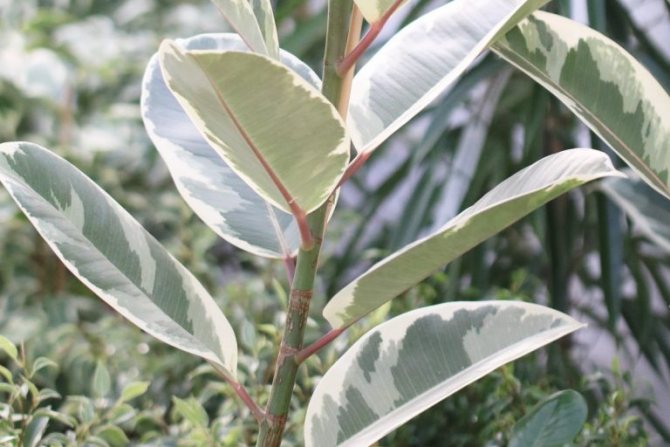

- Excessive watering - the soil begins to dry out in an artificial way.
- Too dry air - you can restore the microclimate by spraying.
- A sharp drop in temperature - all diseases are treated with fungicides.
- Pest infestation - the flower is sprayed with insecticides.
- Sunburn - the plant is shaded with a net.
And these are just the most common mistakes that beginner growers make, as well as methods of dealing with them. However, it is worth noting that not in all cases will you be able to return the flower of power if the state has already been started. For example, after a severe pest attack, there is a chance that the flower will never recover. And with the development of root rot (fungal disease), you can safely throw out the ficus - it will no longer be possible to save it.
The main ways of breeding ficus
One of the most popular among domestic amateur flower growers is rubber ficus, which is reproduced in 3 ways:
- With the help of cuttings.
- By cutting and planting the sheet.
- With air vents.
These are the most common ways this decorative tree can be propagated. Rather, this is how it should be called, since its appearance is more reminiscent of a miniature tree or bush than a flower. Another popular species among ficuses is Benjamin, it has smaller leaves and thin branches in a large number of. But the rubbery one, it is also called the elastica ficus, on the contrary, is decorated with large, fleshy leaves that grow on short cuttings, densely framing the main trunk.
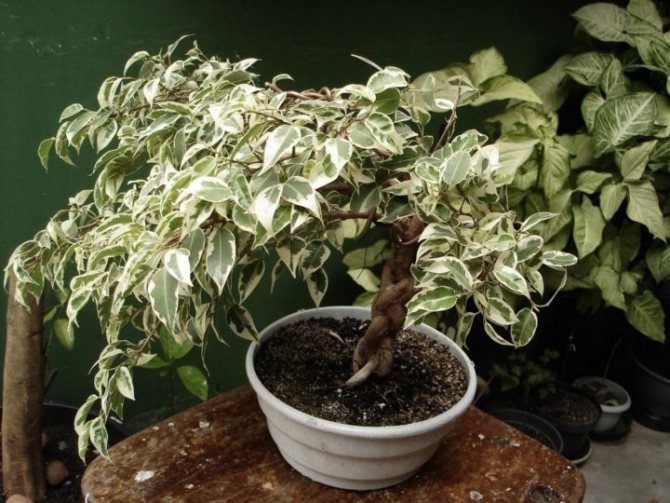

Ficus Benjamin variegated
The conditions and methods of reproduction for these species are the same, but the process itself has its own characteristics. For example, planting an Elastica leaf is much easier than planting a Benjamin leaf. For the latter type, you need to pinch off the material correctly and prepare it for planting.
So, it is worth considering in order how these 2 species reproduce.
Some useful tips from professionals
Many people are wondering how to properly propagate ficus (large-leaved) at home. You can answer it with the help of a few tips that professional florists give in various thematic forums. For our readers, we have studied the most common of these tricks and collected them in one place. Read the list below for more details.
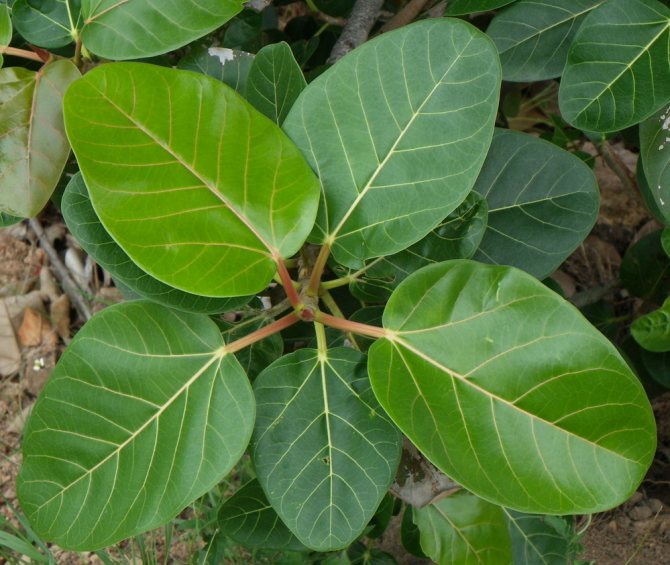

- From one branch, you can get as many cuttings as there are leaves on it, since for successful germination the planting material will need only one whole leaf or eye.
- To increase the chances of rooting, the cutting should be cut with a sharp blade at the bottom. If we are talking about a woody variety of ficus, then this cut should look like a cross.
- In order for young plants to take root faster, try to monitor the optimum soil temperature, creating a greenhouse effect for this. Eighteen degrees Celsius is the best indicator.
- Rooting will also be faster with the use of various phytohormones. You can get them from special mineral and organic fertilizers.
- When propagating old ficus, it is best to use the air layering method, since it will be very difficult to prepare cuttings of proper quality.
In other cases, professionals advise you to adhere to the same rules that have already been described in the previous sections. Unless it is also necessary to take into account the nuances of reproduction that are characteristic of a particular variety. However, for most novice florists, such information will be superfluous. As a rule, it is used by those who plan to breed ficus at home on a large scale, without spending a lot of time for this.
Features of the type of plant with a photo
Ficus is native to India and Indonesia, where the plant grows in the form of an evergreen tree and reaches 30 meters in height. Many varieties of its decorative deciduous indoor counterparts have been bred. Rubber-bearing ficus is also called elastica, and he received the prefix "rubber-bearing" for the presence in his juice of a substance from which rubber can be made. Belongs to the Mulberry family.
Characteristic features of elastic:
- dense oval-shaped leaves with pointed tips;
- the color of the leaves is dark green, burgundy, and also with light blotches;
- the stem is strong, in adult plants it is tree-like;
- has a milky juice high in isoprene;
- the tree is capable of flowering, but rarely produces flowers;
- elastica rarely releases lateral shoots without assistance;
- prefers an average temperature of 16-18 degrees;
- reproduces in several ways.
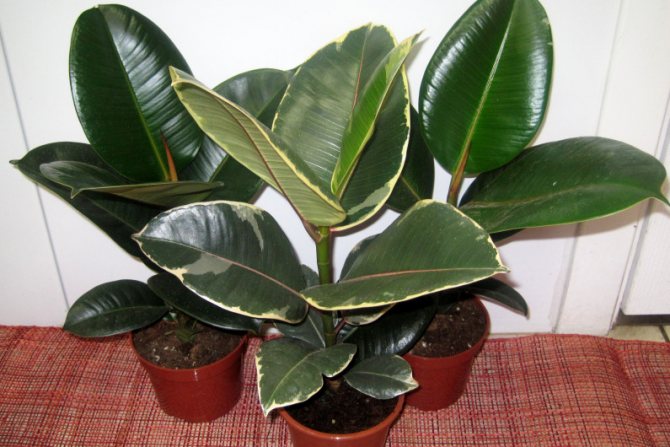

Several varieties of this species have been bred, which differ in appearance and in the peculiarities of caring for them:
- Melanie;
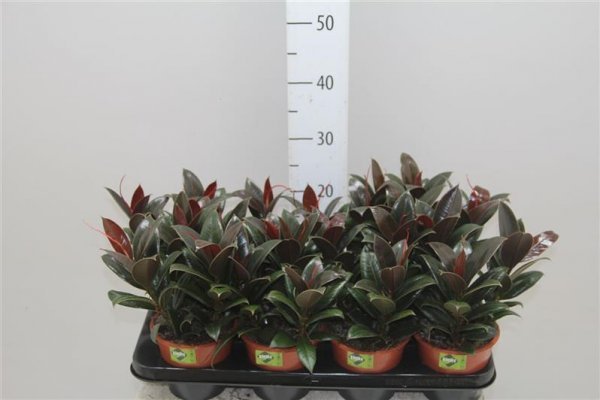

Melanie - Belize;
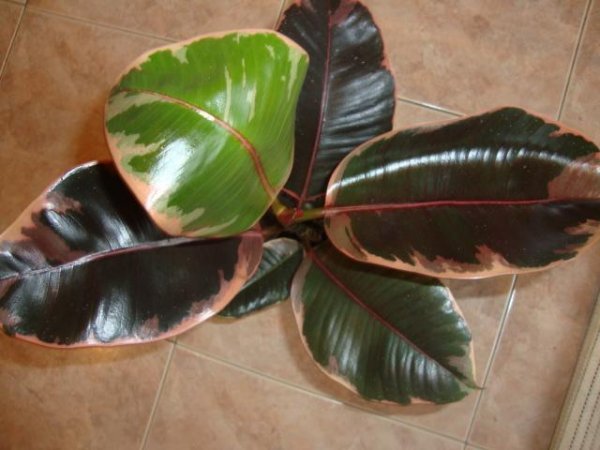

Belize - Robusta;
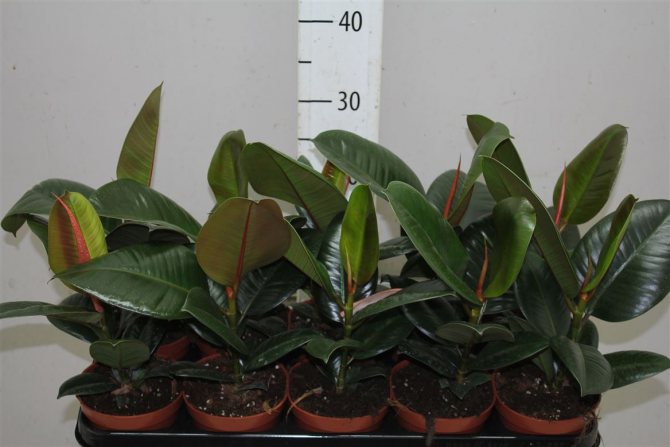

Robusta - Tineke;
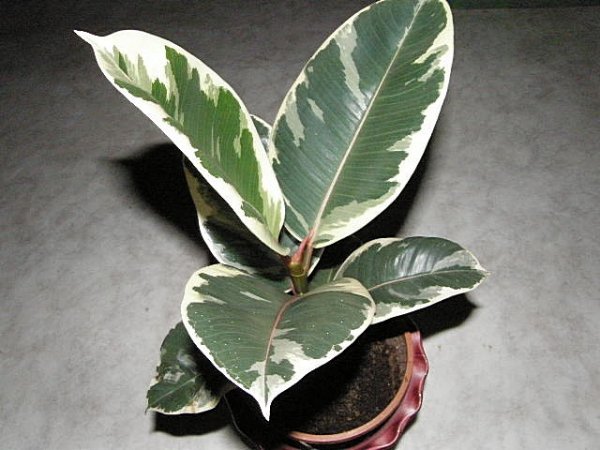

Tineke - Black Prince;
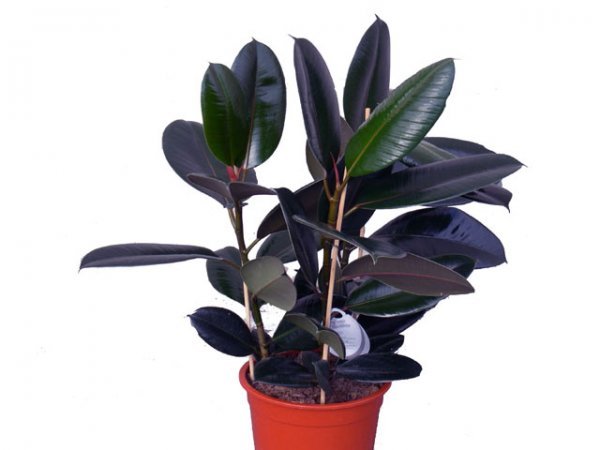

Black Prince - Abidjan;
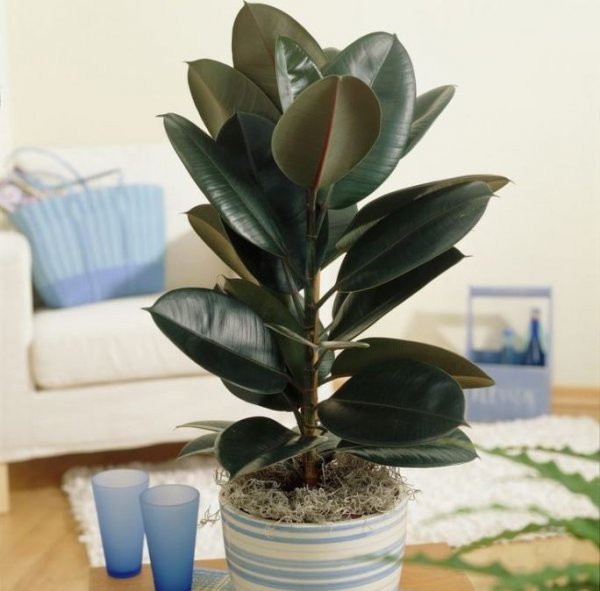

Abidjan - Tricolor;
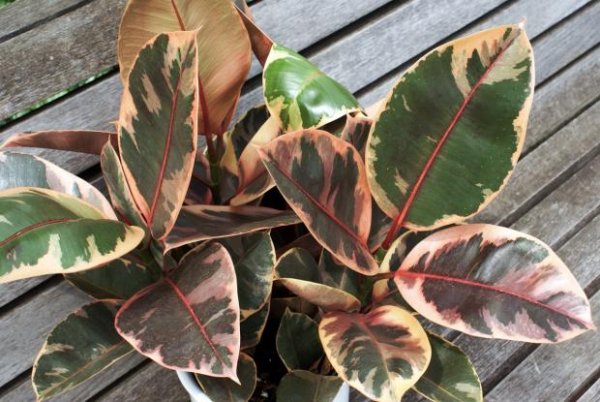

Tricolor - Sriveriana;
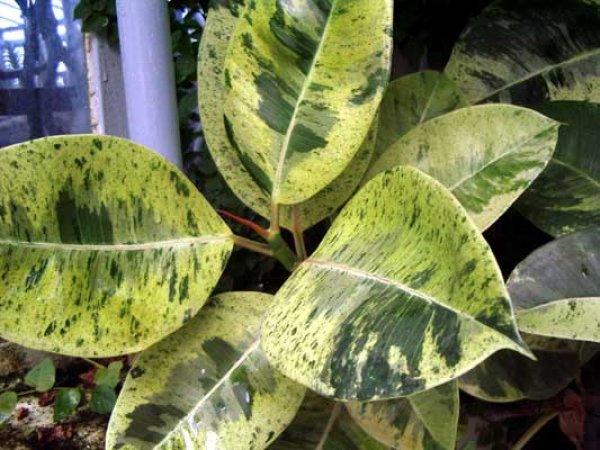

Sriveriana - Variegata.
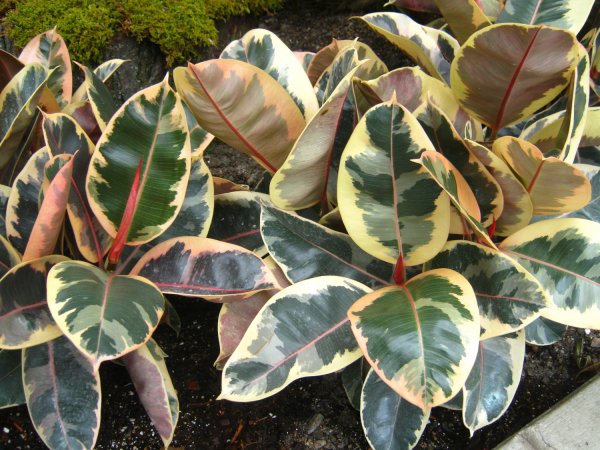

Variegata
The indoor plant is unpretentious in care, it does not need additional expensive fertilizers. The tree grows quickly and has a long lifespan.
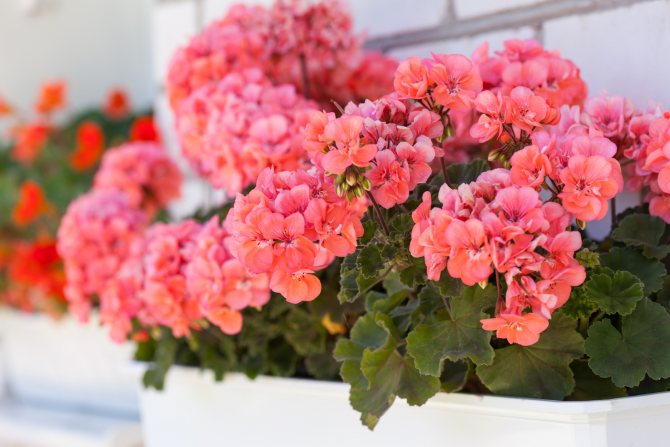

You may be interested in:
How to care for geraniums in winter? Many women love to grow flowers at home, because it is not only beautiful, but there is something to do in their free time ... Read more ...
Is it possible to propagate ficus by seeds?
To propagate a ficus flower in a generative way, you will need to purchase planting material in a specialized store. It will be almost impossible to get seeds at home, since this will require special pollinating insects. However, most inexperienced growers mistake fancy inflorescence berries for seeds, which in fact cannot be used for propagation in any way.
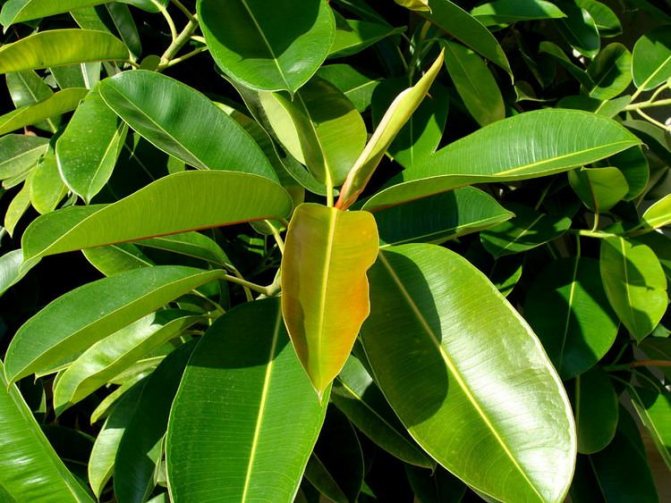

If you managed to purchase ficus seed, then the only thing that is required of you is to prepare high-quality soil for planting. In the usual substrate, which is used for cuttings, the seeds will not be able to hatch. Professionals recommend making the mixture yourself using equal amounts of moss and peat for this. Alternatively, sand (1 part) and humus (2 parts) are suitable.
The prepared substrate will have to be sterilized in advance with steam in order to eliminate all harmful microorganisms that inhabit it. After that, the seed is treated with fungicides and growth stimulants (using a spray gun, and only then placed into the soil to a depth of 0.5 centimeters. It is strongly not recommended to spread the seeds too close to each other if the sowing is in special cassettes.
How to propagate?
When multiplying rubbery ficus, it is worth adhering to the following generally accepted recommendations:
- experts advise to propagate the plant exclusively in warm weather;
- ficus should be kept away from direct sunlight, since they suffer from ultraviolet radiation, especially young leaves are susceptible to its harmful effects;
- when cutting the cutting, it is worth removing the milky juice, while it is enough to rinse it under running water;
- for reproduction, only woody shoots must be used, because in the future they will be able to give roots, in contrast to young shoots;
- to root a stalk, it is necessary to use the upper part of the stem or parts of it that contain more than one node;
- reproduction can be done at any time of the year; many specialists do it in spring or autumn, in November.
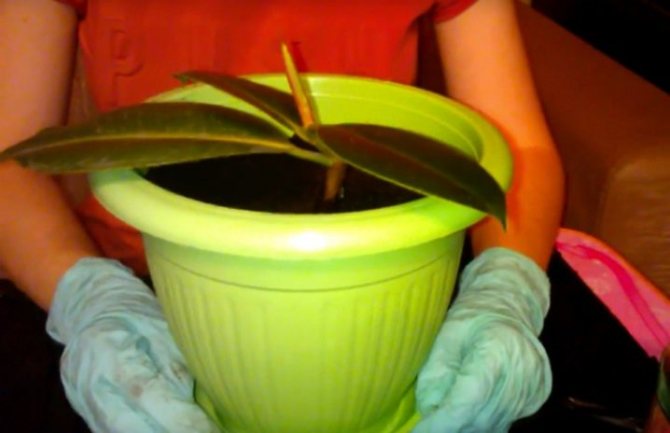

Cuttings
Over time, the ficus can grow, that is, its trunk has a small amount of foliage and becomes very long. Then the tops are trimmed to form the crown of the tree. In this case, new plants can be grown from cuttings cut from the top.
For cuttings of rubber ficus, shoots from the middle part of the trunk can also be used.
To choose the right rubber cuttings, you should pay attention to the following criteria:
- the length should be between 7 and 8 cm;
- the presence of 2 or 3 internodes is important, on which the developed leaves are located;
- the lower cut should be located under the kidney.
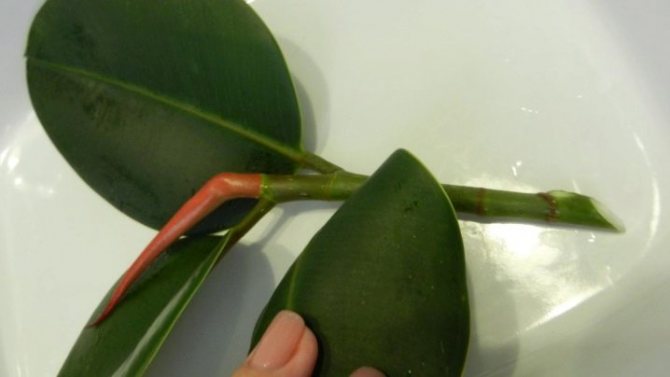

To prepare the cuttings for planting, it is worth adhering to the following algorithm of actions:
- after cutting, the cuttings should be rinsed under warm running water to remove milky juice from its surface;
- it is worth removing the sheet from the lower knot; for this, a rather sharp knife is used;
- the lower leaves of a large size must be twisted into tubes, while the lower side should be inside, such a structure should be fixed with an elastic band.
After preparation, the cuttings should be planted exclusively in loose soil, while observing a slight slope. The cutting should be deepened in such a way that only one internode is in the ground. After planting, it is necessary to thoroughly moisten the soil. If it is necessary to accelerate the formation of the plant's root system, you can independently equip a small greenhouse from a regular plastic bag. Heat has a positive effect on root formation, therefore, experts advise placing the container with the handle closer to the heating devices.
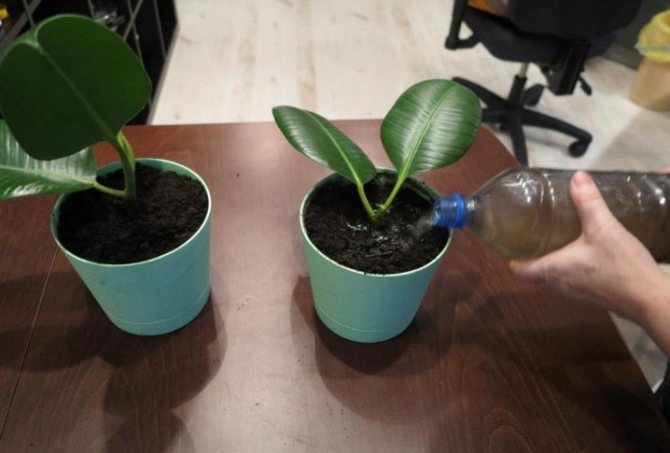

Water can also be used to root cuttings. It should be borne in mind that this option is only suitable for carrying out in the warm season, when the plant is in the phase of active growth. First you need to trim and harvest the cuttings, as described above. After that, they are placed in a container, already settled boiled water is poured into it.
To exclude the possibility of the formation of rot on the roots, it is worth placing a small piece of charcoal at the bottom of the container.
During the formation of roots, the process should be carefully monitored. The water needs to be kept at the same level at all times, so it needs to be refilled from time to time. With a slight drying out, the cutting may die. When the first roots appear, the plant must be immediately transplanted into soil, preferably loose. And then the container with the plant should be equipped with a mini-greenhouse.
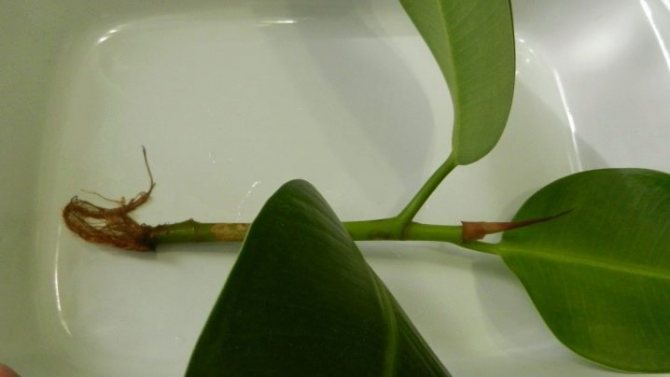

Today, peat tablets are often used to make the rooting of the planting material more efficient and faster. These tablets contain special stimulants for active growth, as well as the formation of the root system. With their use, you can hope for a 100% result. Cuttings should also be prepared as described above. But the tablet should be soaked in warm water before using it to plant the ficus.
When the tablets increase in volume, they should be carefully squeezed out, then a depression should be made in the center and the cutting should be placed there. After that, the tablet with the plant is already placed in a plastic container, while it is worth using a container with a lid made of the same plastic. Such mini-greenhouses are already on sale in specialized stores, but if you wish, you can make them yourself. In the future, the plant needs regular ventilation and watering.
Care of young seedlings
Almost every florist knows how to propagate ficus by cuttings. However, only professionals know how to properly care for young seedlings. For example, in order for them to hatch, you will need to maintain the temperature in the region of 22-23 degrees. It is also strictly forbidden to allow direct sunlight to hit the seedlings, so that the seed is simply not "cooked" and does not die.
The first shoots usually begin to appear in 1-2 months. As soon as they get a little stronger (3-4 days), it is necessary to start removing the greenhouse for several hours a day, so that the plants do not experience strong temperature changes. Watering is carried out using a spray bottle until 3 young leaves appear on the sprout. After that, you can start caring for the ficus like an adult plant. Transplantation into separate containers is possible after 8 days.
It is easy to guess that this method of breeding is very unpopular, since it takes quite a lot of time. In addition, the percentage of seed germination is slightly more than 30% - quite low for a room culture. Therefore, novice growers should use vegetative methods, which are simpler.In addition, the daughter plant obtained from the cut retains all the qualities of the parent.
Landing: step by step instructions
The signal for planting rooted cuttings or leaves in a container for constant cultivation is the formation of new leaves. Plants are planted in pots of small diameter and depth, filled with soil for ficus.
A layer of drainage is laid at the bottom of the pot: fine gravel, expanded clay or pieces of foam. There must be a hole at the bottom of the container for the outflow of excess water when watering. To prevent it from clogging up with spilled soil, a fine mesh is placed under the drainage.
The rooted workpiece is placed in a pot and gradually sprinkled with soil. The substrate is tamped by tapping on the walls of the pot. After planting the sprout, the soil is slightly moistened and the pot is set in a warm, bright place.
Planting the shoot in the substrate
How to plant a ficus sprout? To root the cutting, you need to prepare a container 10 cm high. It is disinfected with a 3% formalin solution. It is better to mix the substrate a few days before planting the cuttings. During this time, it is structured and saturated with moisture.
To do this, mix the components:
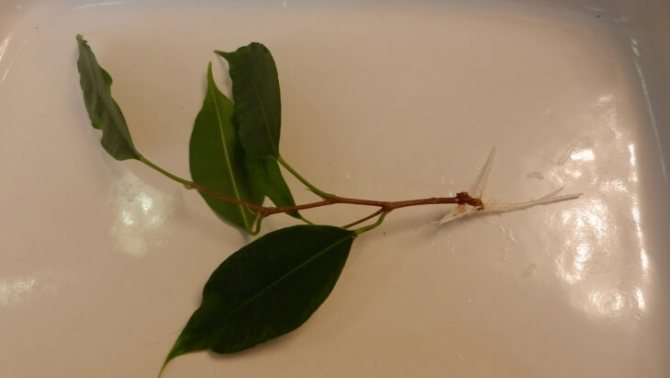

The ficus shoot that is the root
After that, spill with boiling water or 1% potassium permanganate solution.
Before planting the cuttings, the slices are treated with Kornevin (growth stimulant) or crushed charcoal. The planting material is buried to the level of the lower node in a wet substrate.
How to grow a ficus shoot? For rooting, a ficus cuttings need a high humidity of at least 85% and a high temperature of + 28 ° - + 30 ° C. This can only be achieved in a mini greenhouse.


